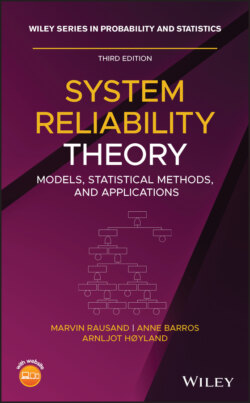Читать книгу System Reliability Theory - Marvin Rausand - Страница 162
3.7.1 Cause and Effect Analysis
ОглавлениеCause and effect analyses are frequently used in quality engineering to identify and illustrate possible causes of quality problems. The same approach may also be used in reliability engineering to find the potential causes for system failures or faults. The cause and effect analysis is documented in a cause and effect diagram.
The cause and effect diagram, also called Ishikawa diagram (Ishikawa 1986), was developed in 1943 by the Japanese professor Kaoru Ishikawa (1915–1989). The diagram is used to identify and describe all the potential causes (or events) that may result in a specified failure. Causes are arranged in a tree structure that resembles the skeleton of a fish with the main causal categories drawn as bones attached to the spine of the fish. The cause and effect diagram is therefore also known as a fishbone diagram.
To construct a cause and effect diagram, we start with an item failure. The item failure is briefly described, enclosed in a box and placed at the right end of the diagram, as the “head of the fish.” The analysis is carried out by a team, using an idea‐generating technique, such as brainstorming. Failure causes are suggested by the team and organized under headings such as
1 Manpower
2 Methods
3 Materials
4 Machinery
5 Milieu (environment)
This is a common classification for failure/fault analysis and is referred to as the 5M approach, but other categories may also be used. The main structure of a 5M cause and effect diagram is shown in Figure 3.13.
Figure 3.13 Cause and effect diagram for the event “car will not start.”
When the team members agree that an adequate amount of detail has been provided under each major category, they analyze the diagram, and group the causes. An important part of this analysis is to eliminate irrelevant causes from the diagram and tidy it up. One should especially look for causes that appear in more than one category. For those items identified as the “most likely causes,” the team should reach consensus on listing those causes in priority order with the first cause being the “most likely cause.”
Some cause and effect analyses also include an evaluation of how easy it is to verify each of the identified causes in the diagram. Three classes are sometimes used: (i) very easy, (ii) somewhat easy, and (iii) not easy. A final step to propose actions to rectify the identified causes, may or may not be included in the analysis.
The cause and effects diagram cannot be used for quantitative analyses, but is generally considered to be an excellent aid for problem solving, and to illustrate the potential causes of an item failure/fault. Cause and effect analysis is also a recommended step in a more comprehensive root cause analysis (see Section 3.7.2).
